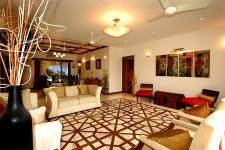In interior design, the transitional style has carved a niche for itself as a blend of classic and contemporary aesthetics. The design approach strikes a delicate balance, offering homeowners a glimpse of both styles. It allows for a seamless transition, from the timeless elegance of traditional design to the clean lines and sleek features of modern decor. Keeping up with the context, Ar. Nirmala Banaji, Principal Architect at Banaji and Associates shares her insights on the essence of transitional design and how it can be incorporated into home decor.
Transitional design acts as a bridge between two styles to offer a cohesive look. Classic design encompasses fine detailing and rich colours while modern design favours simplicity and clean lines. Transitional design borrows this elegance and timeless appeal of classic design while incorporating it into the functional simplicity and understated charm of modern design. The result is a fusion that appeals to those who appreciate the comfort of the past and the functionality of the present.
Principles of Transitional Design
One of the key principles is achieving equilibrium between classic and modern elements. Balancing ornate details with simple, clean lines and creating a symmetrical layout can give the space a transitional character. For instance, pairing a classic chandelier with contemporary furniture can create a balance. Further, a neutral colour palette is another fundamental element of transitional design as it serves as a unifying factor, allowing classic and modern elements to coexist harmoniously.
In transitional design, a mix of materials can create visual interest as incorporating various textures and finishes can add depth and character to interiors. For instance, a classic wooden dining table paired with modern acrylic chairs can create a sense of transition. Moreover, furniture choices also play a crucial role in transitional design as they exhibit the characteristics of both styles.
Incorporating into Home Decor
Home decor begins with selecting a colour palette and creating a transitional design includes the use of neutral tones. Soft greys, beige, and ivory offer a timeless backdrop that complements both classic and modern elements. The key to a transitional design is striking the right balance between classic and modern furniture pieces. Pairing classic sofas with sleek side tables can create a harmonious blend aligning with the scale and proportions.
Transitional home decor prioritises meticulous attention to detail as they elevate the space to new heights of allure. Architectural elements like moulding or panelling add an elegant touch while pairing these with modern statement fixtures can create a visually pleasing environment. Within the paradigm, artworks and accessories also reflect the transitional style. Classic tables can coexist with contemporary sculptures evoking a unique look. Similarly, mirrors with decorative frames can provide a classic touch while their reflective surfaces enhance the modern aspect of the design.
Along with other parameters, the transitional design places great emphasis on comfort. Incorporating plush seating, throw blankets, and soft, inviting textures can make the space cosy and welcoming. Ultimately, adding personal mementoes, family heirlooms, or cherished items can make the transitional space uniquely yours.
The transitional design offers a wonderful opportunity to blend the charm of classic aesthetics with the functionality of modern design, resulting in a space that is inviting, timeless, and elegant. It offers homeowners the flexibility to mix and match elements from different design eras while maintaining a cohesive and harmonious look. With the right balance of traditional charm and modern sophistication, your home can be a testament to the beauty of transitional design.
2024
Project Type - Residential Apartment
Design Team - Banaji & Associates

